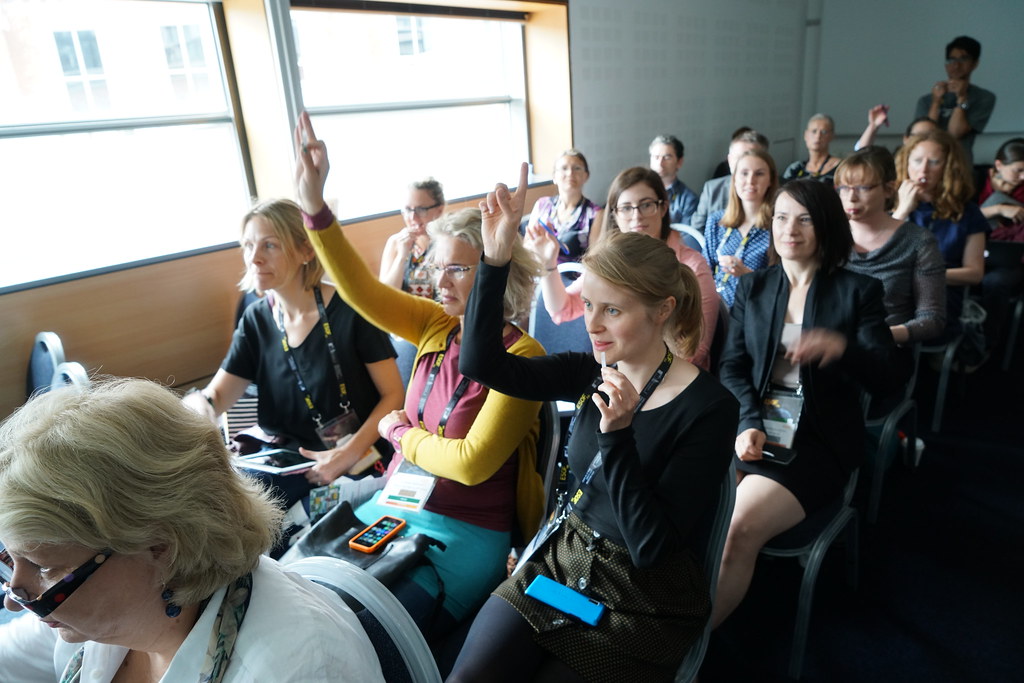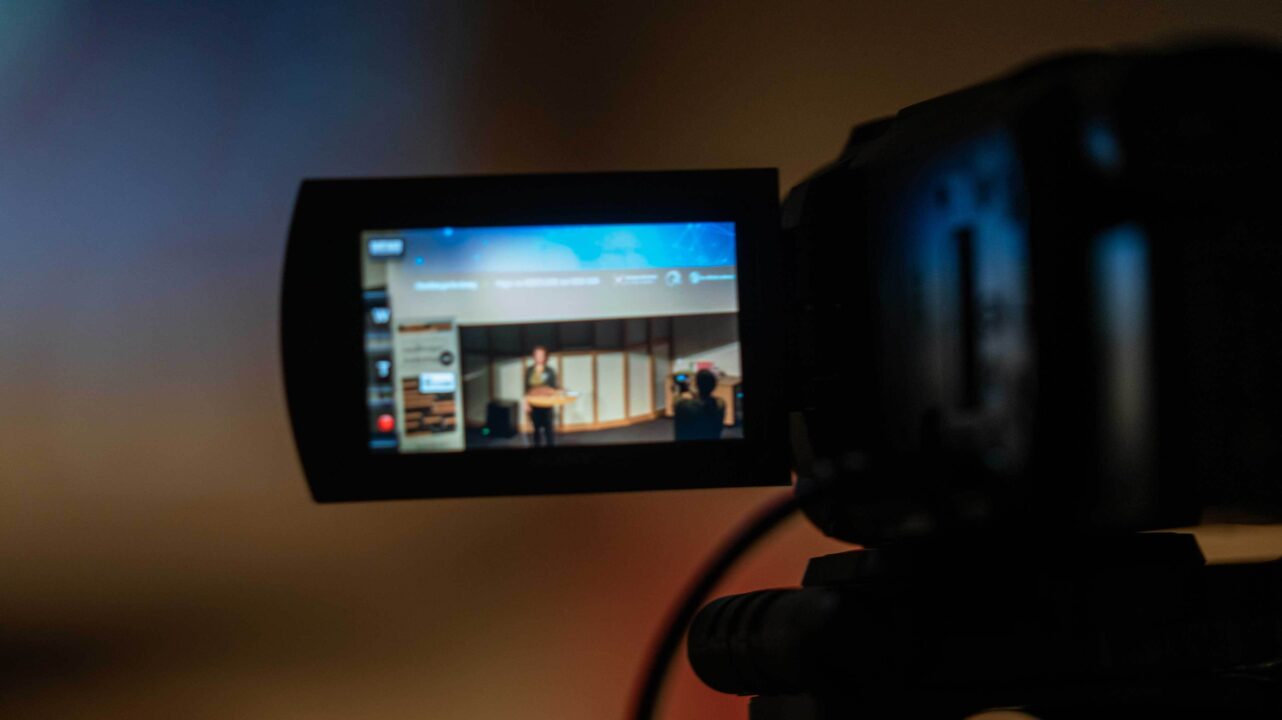Scandinavian countries have small and highly dispersed populations, but are also among the best digitally connected. What does that mean for science communication? In a EuroScience Open Forum session on 26 July in Manchester, scicomm activities run in Denmark, Norway and Sweden, were presented and their success factors and challenges discussed.

Mikkel Bohm, Director of Astra, the National Centre for Learning in Science, Technology and Health in Denmark, talked about citizen science projects in which Scandinavian school children are helping researchers gather huge amounts of data. Examples included a Norwegian nationwide mapping of earth worms, Swedish pupils burying tea bags in the ground and digging them up three months later to learn how much of the tea has decomposed, as well as Danish pupils investigating how physical activity affected their concentration during lessons.
These so-called mass experiments are of mutual benefit; the researchers get more data than they could otherwise easily collect and can develop valuable new knowledge, the pupils get the opportunity to participate in real research and learn about the scientific process, and teachers get material and methods based upon research to integrate in the curriculum.
”Some years we have run joint mass experiments in Scandinavia and been able to compare for instance the indoor school climate between countries. The projects are always relevant to the children’s own lives. It is also important for us to conduct research with the pupils, and not on the pupils,” said Mikkel Bohm.
He invited the session attendees to try an earlier experiment themselves, by tasting a small piece of paper and telling whether they sensed a bitter taste or nothing at all. Two thirds could distinguish the bitter taste, that originated from PTC, phenylthiocarbamide. PTC is an indicator of Taste receptor 2 member 38, a protein that in humans is encoded by the TAS2R38 gene. The result of the experiment was somewhat surprising:
”Usually 30 per cent of the population in the Western world cannot taste it, but only around 3 per cent in Japan, China and West Africa. This ability used to be much more essential during the Stone Age as it was necessary to distinguish edible plants from non-edible, usually bitter-tasting, plants,” told Mikkel Bohm.
He concluded that the mass experiments, run in connection with national-wide annual science festivals in the Scandinavian countries, hopefully contribute to school children learning about science, understanding that knowledge is power and discussing science – in school as well as with their family and friends.
Researchers’ Grand Prix
Sidsel Flock Bachmann and Emmy Gram Lauvanger are Senior Communications Advisors at the Research Council of Norway, where they organise Forskningsdagene, an annual nationwide science festival. They presented the Researchers’ Grand Prix, a contest that takes place in several cities during the festival.
The contestants are challenged to present their research in just four minutes to a panel of judges and an audience, equipped with audience response devices. The judges from academia, media and the performing arts respectively, give both oral feedback and marks. The judges’ and the audience marks are combined and a local winner is announced. The winners of the local contests meet in a national final, which is also filmed and broadcast by national public service television.
“The aim is to help scientists become good science communicators, to raise the profile and status of science communication and to showcase the breadth of research fields in our countries,” said Emmy Gram Lauvanger.
A very similar contest with local heats and a national final is run annually in Sweden as part of the European Researchers’ Night. The candidates are encouraged to speak the local language but since there are many international PhD students in Scandinavia, they are also welcome to deliver their presentation in English.
Success factors for the competition include providing professional individual coaching in presentation skills and ensuring that the contest shows are high-profile productions featuring celebrity jury members and hosts.
“Many contestants have told us that the experience and coaching they received helped them later on when they defended their PhD thesis. They also become more media savvy since the contests usually receive a lot of media and social media attention,” said Sidsel Flock Bachmann.
Borrow a researcher
Another science communication activity run across Scandinavia is the Book-a-researcher concept. School classes are invited to borrow a researcher as part of annual science festivals, explained Helen Garrison, a project manager at VA (Public & Science) in Sweden. In some cases, workplaces can also borrow a researcher. The concept has similar names and works more or less the same way in Denmark, Norway and Sweden.
Through an online booking system teachers can reserve a researcher within a field of their choice. The researcher travels to meet the pupils in their school. Typically, he/she gives a short presentation about their research and work as a researcher, followed by questions and discussion with the school children. There are no fees to borrow a researcher and the researchers’ expenses are paid by the science festival.
”The model is easy to scale and replicate, cost effective, reaches new audiences and challenges possible stereotypic images of researchers being old, male and eccentric,” explained Helen Garrison.
”Furthermore, the audience does not need to travel, the programme fits easily into lesson time and can be linked with the school curriculum. People are also usually more comfortable in their own environment and therefore more likely to ask questions.”
For researchers, taking part in the programme give access to new perspectives, new ideas and new audiences. They are surprised that attendees often are as interested in their personal journey – how and why they became a researcher – as in their actual work.
”The biggest challenge with the programme is to be able to meet the large demand, and also to engage researchers because of their limited time,” concluded Helen Garrison.
Nordic Science News
Vibeke Hjortlund is Editor-in-Chief of Videnskab.dk, a Danish popular science media. She is also in charge of ScienceNordic, the English-language equivalent with science news from all of the Nordic countries, targeting the global research community, businesses, innovation clusters, institutions, decision makers and journalists. ScienceNordic is published in a collaboration between Videnskab.dk and the similar Norwegian news site Forskning.no, and the stories published here, including coverage of Sweden and Finland, are mainly based on their content, edited and translated to reach an international audience.
All three sites offer independent science news and in-depth coverage. ScienceNordic also carries content from universities and research councils who want to disseminate their science stories to the public. This content is presented in a separate section, clearly marked with the responsible institution.
”Science is international, but the science press is dominated by news from the Anglo-American research institutions,” said Vibeke Hjortlund, explaining that ScienceNordic was established to give Nordic research more international visibility.
”We are part of the media food chain, sought by other journalists looking for a story. We are often quoted and the sharing potential is great – the stories can go viral in social media,” said Vibeke Hjortlund, sharing a number of examples.
According to her experience, many scientists want to share their knowledge, and over the years more and more scientists have been willing to contribute content to the websites. This can also be translated and published at ScienceNordic, again enabling local research to have global reach. To help scientists communicate, ScienceNordic has published a book titled Share your research. Their participation in programmes like Borrow a Researcher or Researchers’ Grand Prix also makes it easier for them to grab the opportunity to write an article and have it published.
Engaging researchers is easy
”Every researcher wants to be featured in media – it enhances their chances of getting funded,” said Vibeke Hjortlund, answering an audience question on how to motivate researchers to engage in the scicomm activities presented.
”In terms of the mass experiments, it is a trade-off since researchers get a lot of data,” added Mikkel Bohm.
However, it was highlighted that often researchers are not properly recognised or rewarded for their public engagement efforts.
”Researchers sometimes have to take part in the borrow-a-researcher programme in their spare time, almost undercover,” told Helen Garrison.
”Initially it was hard to find contestants for the Researchers’ Grand Prix due to the commitment involved. But when word started to spread, also between researchers, it became much easier,” said Sidsel Flock Bachmann.
”In some cases there is subsequently huge interest in the research presented. The Grand Prix champion in Sweden in 2013, a medical researcher and a doctor, gained widespread attention for his research into a method for preventing infections in premature babies. The method is now used in hospitals across the country,” said Helen Garrison.
Another audience question was how the concepts had started and grown. The Norwegians travel and frequently visit other science festivals to find and customize new formats. That is how they found out about the Researchers’ Grand Prix contest in Denmark.
In Sweden, the formats are developed and used during the European Researchers’ Night, which is celebrated annually. Events throughout the country are organised by local partner organisations that can use and adapt the common concepts.
”It is a busy life being a researcher. We help them with organisation and practical matters, thus making it easier for them to take part in public engagement activities,” said Mikkel Bohm.
In Sweden, it has been beneficial having the research councils as collaboration partners in the science communication initiatives.
”To our experience, it makes researchers more inclined to take part,” said Anna Maria Fleetwood from the Swedish Research Council, in the audience.
Open concepts free to use
The scicomm activities are funded by private foundations in Denmark and by the European Commission together with the research councils and other organisations in Sweden. In Norway, the costs are covered by the Research Council and local universities. Videnskab.dk and Forskning, both public service media funded primarily by local government and universities, carry the cost of ScienceNordic, but ScienceNordic previously received financial support from Nordforsk (that provides funding for, and facilitates Nordic cooperation, on research) and the Ministries of Education/Research in Norway and Denmark.
”The Scandinavian examples show how important digital media is for science communication, as is rewarding and recognising researchers engaging with the public,” concluded the session facilitator Sophie Duncan, Deputy Director of the National Coordination Centre for Public Engagement in the UK.
The session was jointly organised by Astra in Denmark and VA (Public & Science) in Sweden, and took place at ESOF, a pan-European conference dedicated to scientific research and innovation, held between 23 and 27 July in Manchester, UK. The session was supported by Riksbankens Jubileumsfond – the Swedish foundation for humanities and social sciences.
All the presented concepts are free for everyone to try out and use. Additional ideas and inspiration on science communication activities run in Scandinavia can be found in the Science Communication Toolbox.
Text: Cissi Billgren Askwall, VA (Public & Science)
Photos: Terje Heiestad, NordForsk
At ESOF VA also ran a session, together with the Royal Institution of Great Britain on Public Engagement – what’s the point.

